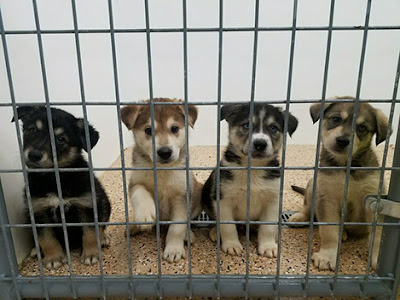Dogs are in shelters for a variety of reasons. Some of them have behavior issues, some just got too big and then others just had the misfortunate of having a first owner who didn't take the time to train them and give them the proper attention that every dog needs.
Your new rescued dog
When you get your new dog from the shelter, you will be doing a service to the dog by saving it's life and you will also be doing a service to the community by helping to get a homeless dog out of the shelter and off the street.
Ideally you would like to get any information there is regarding the dog from the past owner if that information is available. That information will give you some idea of what type of problems they may have experienced with the dog, if any.
The dog's first vet visit
After adopting your new dog, and when visiting the vet for the first time, you should bring all records that pertain to the dog. This information should be updated to include any vaccinations, etc. that the dog received from the shelter.
With a little coaching and encouragement from you and the vet staff this first visit to your vet should be an enjoyable experience for both you and your new pet.
Physical exam
Your vet should do a complete examine to make sure that your new dog is healthy and in good physical condition. The dogs weight, eyes, ears, temperature and skin condition will all be checked. If any vaccinations are due, this is the time to get them. Before you go to visit your vet, you should prepare a list of any questions that you may have.
Advice of vet
Of course you vet will give you any recommendations he has on keeping your dog healthy including the importance of heart worm preventative and as well as diet needs. The dogs diet will change over the years as the age and health condition of your dog changes. Necessary precautions and guidelines should be given to you so that your newly adopted dog will adjust with it's new owners easily.
Make it fun
The important thing to remember with this first vet visit for your new pet is to make sure that the experience is a fun time for the dog. Do everything you can to make the visit stress free.
Source:http://ezinearticles.com/?Adopting-a-Dog---Your-Dogs-First-Vet-Visit&id=8188037
















































